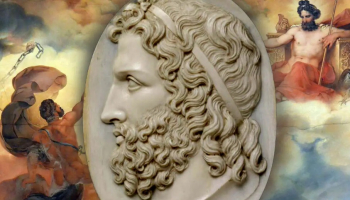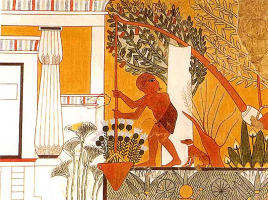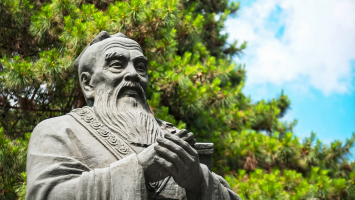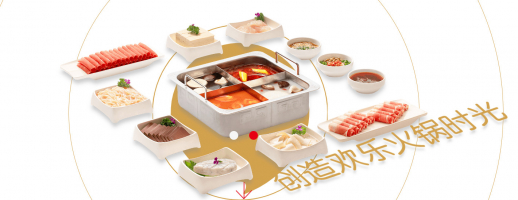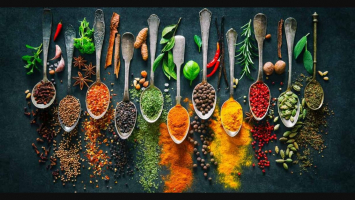Top 10 Most Famous Ancient Egyptian Kinds of Food
Ancient Egyptian is not only famous for its long civilization with historical relics but also famous for the most famous Ancient Egyptian kinds of food made ... read more...from vegetables and spices. In addition, the vegetables and fruits here are also very fresh thanks to being grown on the fertile land accreted by the alluvium of the Nile. The majority of Egypt's population is Muslim, so pork is not part of the traditional cuisine. With age-old beliefs, the Ancient Egyptians believed that they were blessed with the food of the gods, which explains why Egypt is on the list of tourists from all over the world. In the world.
-
The ancient Egyptians were famous for their love of beer and it formed the most famous Ancient Egyptian kinds of food in their diet. Along with bread, beer was the most popular staple food in ancient Egypt, and people drank beer every day. In fact, beer is the favorite drink of mortals and gods, the rich and powerful, adults and even children. Beer was a drink for everyone in ancient Egypt. It was consumed by all classes, and all ages in the same way that we consume water today. For the Egyptians, beer was the main source of their diet. They had beer for their breakfast to start the day, and they took it with their dinner to close the day. It's no wonder, then, that the Egyptians seemed to always be tall and energetic in what they were doing, beer-fueled it.
Whether it's the first meal of the day or dinner, beer is always part of it. It's no wonder that with so much alcohol in their daily diet, almost all Egyptians lead a high-class life. Beer, along with bread, oil, vegetables, and condiments, is an important part of the wages workers receive from their employers. This most famous Ancient Egyptian kind of food is said to be a healthier drink than water from often polluted rivers or canals. Ancient Egyptians made beer by boiling half of barley and then soaking it in water for it to set, it is a very nutritious food containing high protein, minerals, and vitamins. It's the same thickness as a glass of milk and contains low alcohol content.
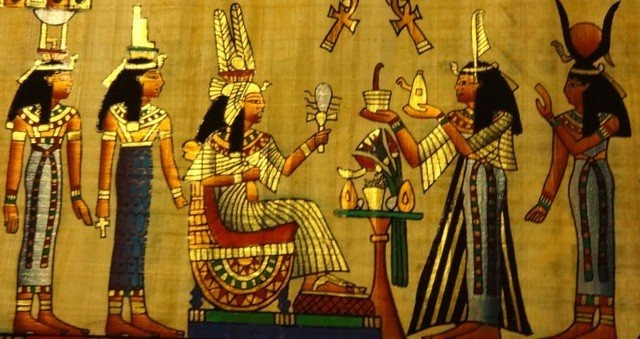
Source: smithsonianmag.com 
Source: nationalgeographic.com -
Bread is a basic staple of the Egyptian diet, being one of the most famous Ancient Egyptian kinds of food. Each tomb owner's first wish from those who are still alive across the grave is 1,000 loaves of bread. From archaeological remains, art, and writing, we know that loaves can be created in many fanciful shapes, such as obelisks, geese, cattle, gazelles, people, flowers, vases, fruits, and geometric shapes. The bread was a staple food item in the diet of the ancient Egyptians, but the bread they ate was different from the bread we normally eat today. Because of the primitive tools used to make bread, some undesirable ingredients such as quartz, feldspar, mica and other ferromagnetic minerals are often mixed with the flour, along with germs and other allergens.
After the dough has been formed, bread is made by mixing the dough and kneading it with both hands or even feet in large kneading drums. To add some flavor, additives such as yeast, salt, spices, milk, and sometimes eggs are added just before the bread is cut into pieces. The bread was always coarser and harder because of these extra ingredients, but nonetheless, bread made up the largest part of the ancient Egyptian diet. The staple of ancient Egyptian cuisine was the bread which was eaten by both the rich and the poor. It is consumed daily and is made from wheat or barley.

Source: ancientegyptalive.com 
Source: ancientegyptalive.com -
Wine was also consumed in ancient Egypt, it deserves to be on the list of the most famous Ancient Egyptian kinds of food. Several recipes for wine are found in a 10th century CE Baghdad cookbook that describes Egyptian wine produced using the same methods documented in the art and section. archaeological remains of antiquity. The Egyptians have known wine since 3000 BC. The Egyptian word for wine, "JRP", precedes any other word for wine. By the 18th dynasty, the wine had become a popular consumer product in ancient Egypt with both red and white wine available to everyone.
To make wine, the ancient Egyptians picked a bunch of grapes and squeezed out the juice by stepping on them in a trough big enough to hold at least six men. The mixture was sealed in an earthen pot with the date and vineyard, almost the same as it is today. For most of ancient Egyptian history, wine was mainly consumed at the court of the pharaohs. They even appoint an official taster. Wine is also a popular drink on the menus of the rich and powerful. The ancient Egyptians also made white and red wines from grapes, which were combined with spices and honey. They made as many non-alcoholic drinks from the fruit as the day.

Source: nationalgeographic.com 
Source: wineofancientegypt.com -
Meat is one of the good food sources for the body as it serves a large amount of energy and nutrients. Therefore, it is not surprising to find it as one of the most famous Ancient Egyptian kinds of food. Although it is not strongly supported by the evidence found in the remnants. Murals and tombs that make a bold claim that the people of ancient Egypt enjoyed eating meat are also widely believed by archaeologists. Fish and poultry products were considered to have a regular presence on the table of the Egyptians in ancient times. Their meat consumption comes from various sources such as hunting. They also get meat from domesticated and domesticated animals. However, for the cattlemen, only the wealthy men could enjoy the occasional finesse. The regular and poorer classes mainly have poultry products from ducks and geese.
Beef is generally expensive and at most will be sold once or twice a week, and then mostly for sale to the royal family. The poor preferred poultry such as geese, ducks, quails, and cranes, which changed when domestication began in the New Kingdom. Most of the edible fish from the Nile were consumed, with the exception of those related to the Egyptian god Osiris. The meat can be eaten fresh after being stewed, thinly sliced and air-dried, or salted. Sheep and goats are also eaten but in smaller quantities. It is often wrongly said that the Egyptians did not eat pork, mainly based on the words of the Greek historian Herodotus and the fact that pigs rarely appear in Egyptian art. Archaeological evidence shows no truth to this. Pork bones with butcher marks on them are commonly found at settlement sites and there is even a mummy whose stomach contains tapeworms, which can only be eaten by pork. The many exotic types of meat the Egyptians consumed included Gazelle, Hyena, and even rats, something the ancient Romans also indulged in.

Source: about-history.com 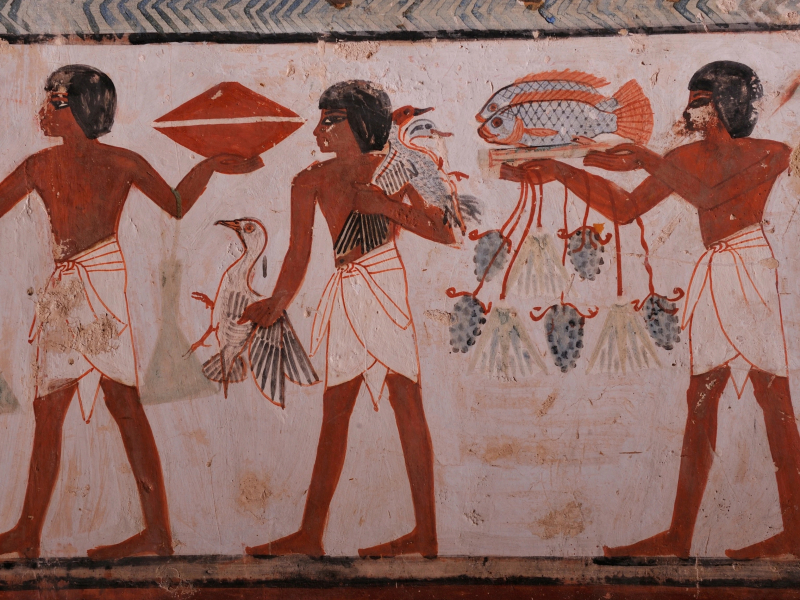
Source: historyhit.com -
The ancient Egyptians used a lot of food additives and spices, mainly oils, in cooking. Therefore, spices and oils become one of the most famous Ancient Egyptian kinds of food. They have 21 different names for different types of vegetable oils obtained from sources such as sesame, castor, flaxseed, beet seed, horseradish, safflower, and colored seeds. Horseradish oil is known to be very popular. They also like a variety of spices like salt, anise, cinnamon, coriander, cumin, cumin, fennel, fenugreek, marjoram, mustard, and thyme. Sugar condiments did not appear in ancient Egypt until many years later, but sweeteners such as syrups made from dates, grapes, and figs were used for sweetening purposes.
While other civilizations of their time had simple foods, the ancient Egyptian diet was different. The ancient Egyptians used spices and oils for flavor, including cumin, cumin, coriander, mustard, thyme, marjoram, and cinnamon. Most spices and oils were imported and therefore too expensive to be used outside the kitchens of the wealthy. They are very creative to provide a taste of their food. In ancient times, items used to spice up the flavor of their bread, meat and other staples were very popular. They find it necessary to make the food tasteful and enjoyable. In the ancient times of the Egyptian civilization, oil was the main commodity for culinary creations. This is widely used especially for cooking meat. The Egyptians enjoyed using oils and this claim is bolstered by the fact that they have about 21 different oils. Oils used for the diet are usually made from vegetables such as radish seeds and castor. To get a sweet taste, they often use honey or syrup (made from dates, grapes, and figs).

Source: ancienthistorylists.com 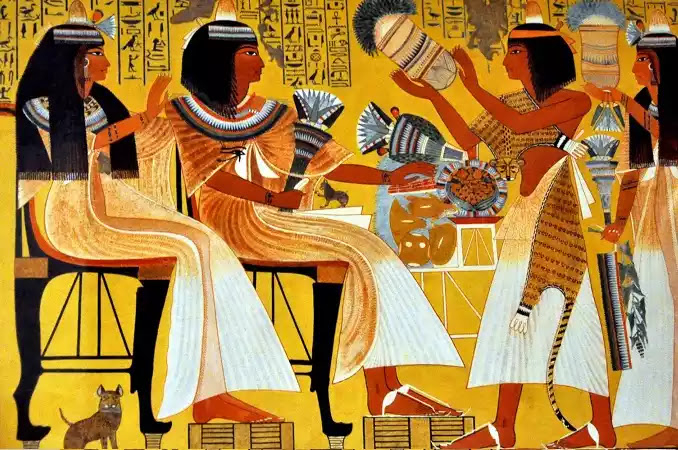
Source: archaeologynow.org -
Although not as widely available as other fruit-based food products (such as beer and wine), a wide variety of juices was enjoyed by some people in ancient Egypt and was included in the list of the most famous Ancient Egyptian kinds of food. Sweet citrus fruits are mainly used to make juice. The most popular were grapes and figs, which the Egyptians would squeeze until every drop of juice came out of them. Like honey, the syrup is made from unfermented grape juice and other fruits like raisins, dates, figs, and even the roots of the chuba tree, a plant that grows in plains swamps, has a pleasant sweet taste and is also used for sweetening purposes.
The Egyptians were the creators of a wide variety of juices that many people enjoyed for centuries. Although it is not as popular as other fruit products such as wine, juice still made a major breakthrough in the ancient Egyptian diet. The Egyptians had their juices mainly from the citrus fruit group that would be mixed with sweeteners to enrich the flavor. For that, they usually add honey. In addition, they also use grapes and figs which they will press until the final drop and until the fruits have completely drained out to be enjoyed as syrup. For sweetening purposes, while honey is their best bet, raisins, figs, and the roof of Chuba (a common plant that grows in Delta's swamps) also serve as juice sweeteners.

Source: ancient-origins.net 
Source: cairogossip.com -
Again, because so much of the land was fertile due to the annual flooding of the Nile, the Egyptians grew and ate a variety of fruits. It is difficult to list all the fruits eaten in Ancient Egypt, but there is documented evidence that fruits high in sugar and protein are in vogue. Apple, olive, and pomegranate trees were brought to Egypt around the time of Hyksos' reign or later. Grapes and figs are also popular fruits when they are available. Coconut, on the other hand, was an imported luxury item that only wealthy Egyptians could afford. The presence of such a variety of fruits in the daily diet of the people can be seen in the remains found in some of the tombs.
Before Egypt imported fruits like Apples and Olives from their neighbors around the Hyksos regime, the fruit was a popular staple enjoyed by the majority of Egypt. In fact, they had a lot of variations to it proven and traced the paintings on the walls and remnants around the tombs. Since their land is blessed by the Nile with annual floods, it makes the land highly fertile for agricultural industries such as fruit and vegetables. Thus, the Egyptians could enjoy variations of the fruit as it was an abundant commodity on their land. What makes it surprising is that the land is so fertile, that it has come to a point where recording every fruit consumed by them becomes a daunting task. Apparently, the Egyptians liked to have fruits from the high sugar and protein group. In the list of most famous Ancient Egyptian kinds of food, grapes, figs, melons, and dates are a few names commonly found in their staples. Coconuts are an imported luxury item that can only be provided by the wealthy.

Source: thecollector.com 
Source: ancient-origins.net -
The ancient Egyptians ate vegetables as a supplement to their daily meals, so this is one of the most famous Ancient Egyptian kinds of food. Every year, due to the flooding of the Nile, much of the land around the river is fertile and ripe for farming. Since most poor families live off of the banks, vegetables are the common food of the poor. However, they were equally popular among wealthy Egyptians, whose vegetables were consumed alongside other foods such as meat and bread. Onions, garlic, leeks, lentils, cabbage, radishes, radishes, legumes, and cucumbers are among the most common vegetables grown and consumed.
Despite the fact that the Nile was not the main source of hydration, which was the main reason for the fertile nature of the soil and the diversity of ancient Egyptian food due to the annual flooding, which allowed the cultivation of different crops and vegetables. The most common vegetables are scallions and garlic used for medicinal purposes plus leeks, cucumbers, lentils, lettuce, celery, beans, beans, lentils, radishes and turnips plus Papyrus is used to create paper, which is eaten raw, boiled, and even roasted. Wild vegetables are numerous, from onions, leeks, lettuce, celery (eaten raw or to taste stew), cucumbers, radishes, and radishes to gourds, melons, and papyrus stalks. Pulses and legumes such as peas, beans, lentils, and chickpeas serve as important sources of protein.

Source: engelsbergideas.com 
Source: engelsbergideas.com -
Milk and other dairy products are another widely enjoyed ancient Egyptian food and it deserves to be on the list of most famous Ancient Egyptian kinds of food. By far the most important of these is milk; both cow's and goat's milk, while donkey's milk is found in medical prescriptions. It is often enjoyed for their morning routine, which is an exclusive diet. Milk and other dairy products became a popular culinary practice in ancient Egypt as people saw the benefits of livestock farming practices. Accordingly, the cattle business is a symbol of prestige because the products are exclusive to the wealthy. It eventually became a popular field and so it made a clear mark on their diet.
The advent of agriculture and farming gave rise to the cattle-raising practices that were maintained in ancient Egypt. Bulls are used only for agricultural purposes, but other livestock such as goats, sheep, and cows are raised for milk. Cattle raising is very common, and the size of the herd will reflect the prestige of the owner, as well as the temple of the animals. In addition to milk consumption, other dairy products such as curds, whey, and ice cream are also consumed as popular delicacies. However, based on which temple people follow, certain types of dairy products including milk are banned in certain places. Although this staple was not widely consumed by all of Egypt's population, milk and other dairy products were a popular diet for upper-class Egyptians.

Source: thoughtco.com 
Source: thoughtco.com -
Poultry is one of the most famous Ancient Egyptian kinds of food enjoyed by both the rich and the peasants of ancient Egypt. Poultry as common as geese, swans, ducks, quails, cranes, pigeons, and even pigeons and ostriches were all too familiar in Ancient Egyptian life. Eggs from ducks, swans, and geese are regularly eaten. In particular, the ancient Egyptians invented the delicacy of foie gras.
Pigeons, geese, ducks, and other poultry were considered more common among the richest people in ancient Egypt, and wild cranes, swans, and ostriches would become the big money killers. Besides, duck, geese, and geese eggs are also consumed regularly. Most of the time, poultry is not eaten as soon as it is produced but is preserved with spices for consumption for a longer period of time. The poultry in ancient times was quite different from what we have now. While chickens became the main commodity for poultry products, in ancient Egypt it was relatives. Ducks and geese are especially popular foods for every Egyptian. In addition to meat, other poultry products such as eggs are often consumed in the daily diet. Usually, for poultry products, they will keep it with seasoning so it can be consumed later. Since it was one of the popular and beloved foods in ancient times, keeping their kitchen with poultry was a great thing to do.

Source: engelsbergideas.com 
Source: hipra.com
















